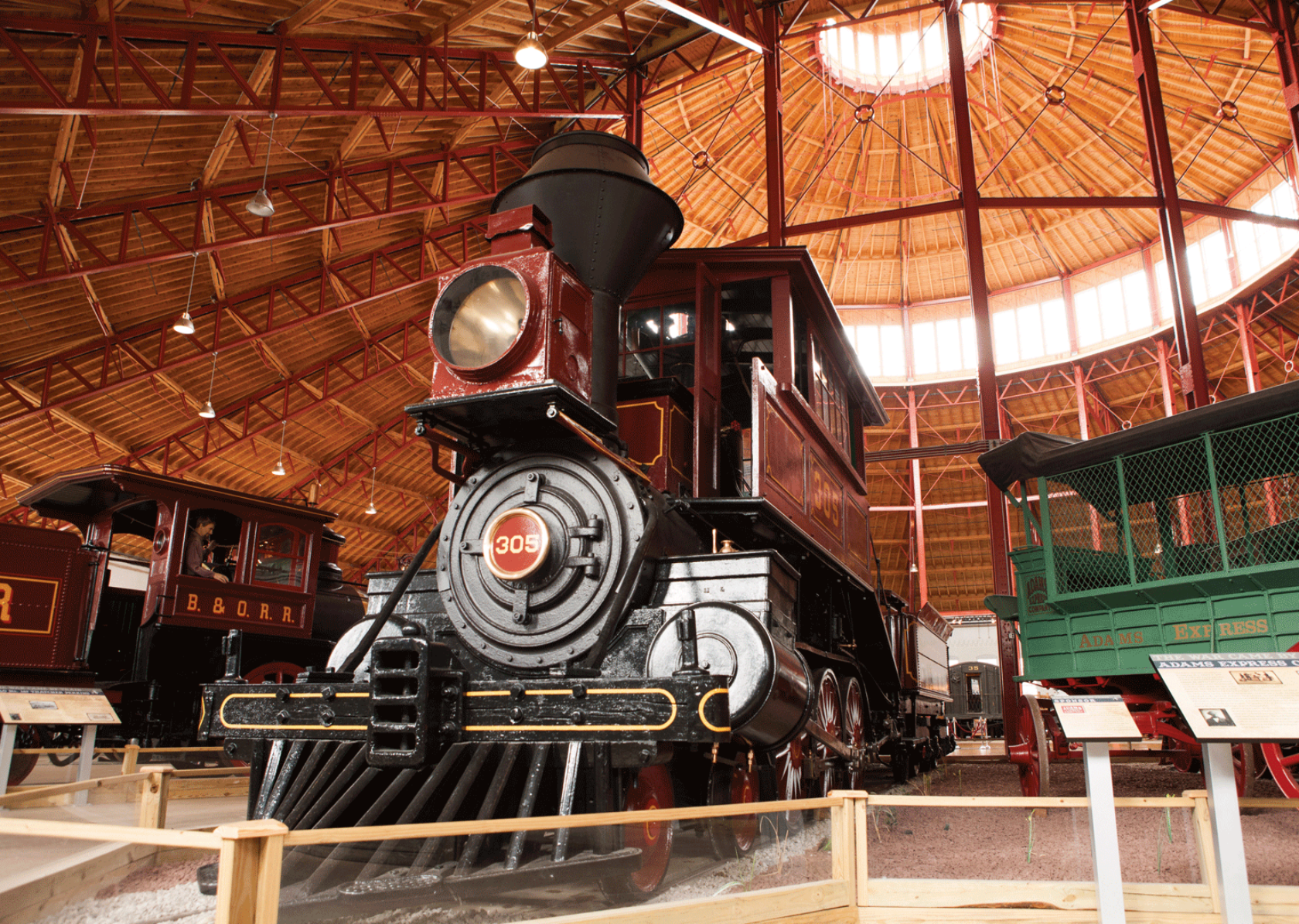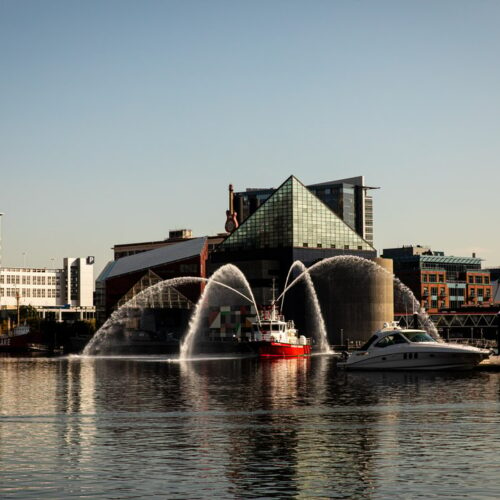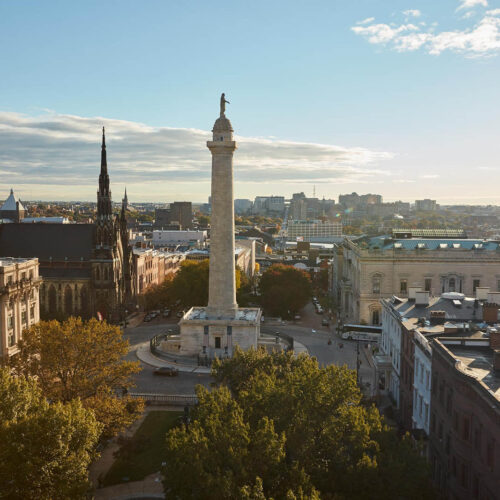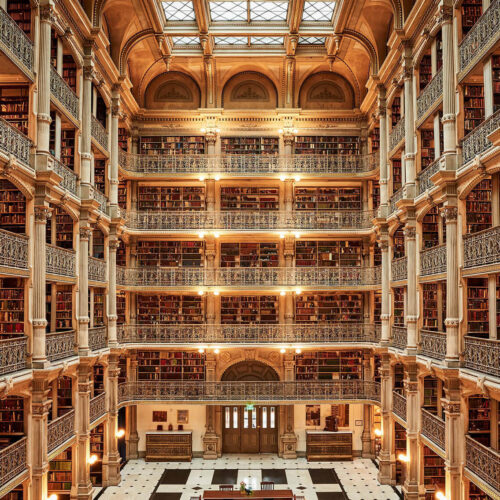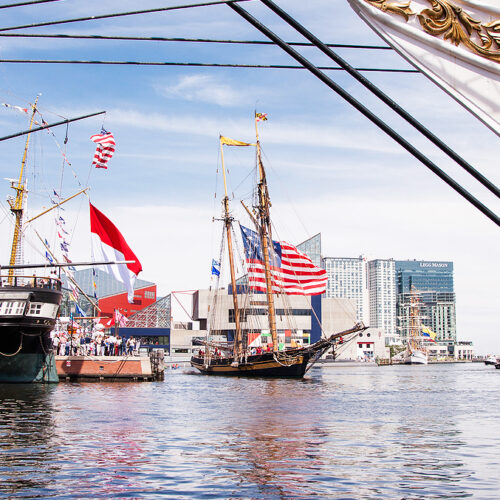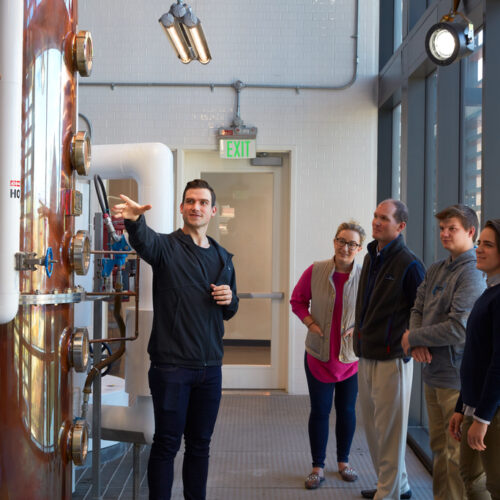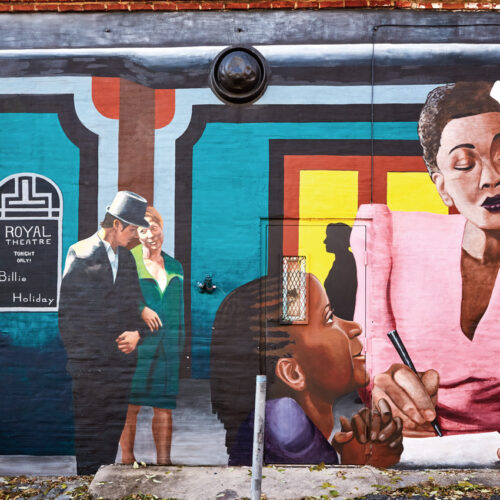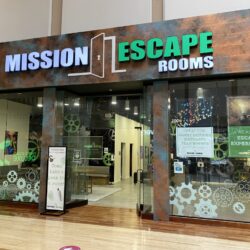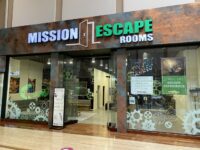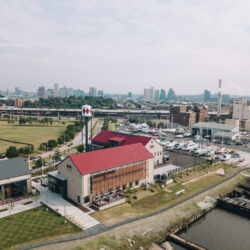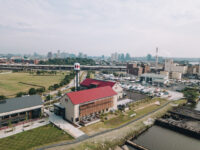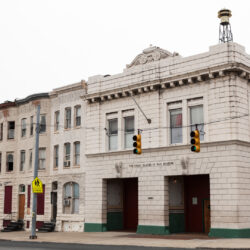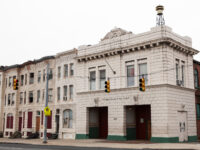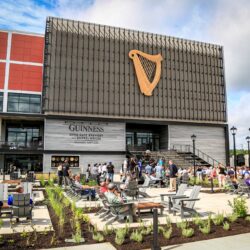Niche Baltimore Museums You Should Put on Your List
From trolleys to teeth, we’ve got a museum for you.
Baltimore may be home to some pretty famous museums, but this city also has a bunch of lesser-known gems featuring thoughtful curations on specialized subjects. During your visit, add some of these niche museums to your must-see list.

Photograph from below of Babe Ruth sculpture at Camden Yards.
Babe Ruth Birthplace and Museum
Renowned pitcher George Herman “Babe” Ruth was born in Baltimore in 1895 and recruited to play for the Orioles in 1914. It was here that Ruth got the famous nickname from his teammates. His boyhood home, which is now a museum, stands just steps from Camden Yards. Follow the 60 painted baseballs on the sidewalk to 216 Emory Street where you’ll find the Babe Ruth Birthplace and Museum, complete with memorabilia from his childhood and career. Be sure to view the “Champions” exhibit, which features the 1983 World Series and Super Bowl V trophies along with artifacts from other championship athletes or teams.
Baltimore American Indian Center Heritage Museum
Since its founding in 1968, the Baltimore American Indian Center has committed itself to caring and celebrating the surrounding Native community. It remains one of the area’s only resources for both Natives and non-Natives to learn about the American Indian experience and engage in dialogue with one another. Murals, art pieces and historical texts cover the museum’s walls, and a serene garden out front features herbs and plants traditionally grown by Native peoples along the East Coast. The BAIC is open on Thursdays and the last Saturday of every month.
Baltimore Immigration Museum
Between 1868 to 1914, the Locust Point immigration piers welcomed 1.2 million European immigrants, making it the third busiest port in the United States at the time. The Baltimore Immigration Museum tells the stories of those immigrants, as well as the Asian, African American and Latino populations who settled in Baltimore in the 1920s-60s. Located within the historic Immigrant House that gave shelter to more than 3,710 people from 1904-1915, the museum houses artifacts, letters and educational panels that reveal the harrowing and inspirational journeys of those who left their homelands to pursue a better life in Baltimore.
B&O Railroad Museum
You don’t need to be a train aficionado to appreciate a full-sized locomotive up close. Housed inside the original, historic roundhouse building, the B&O Railroad Museum pays homage to Baltimore as the birthplace of our country’s rail system with nearly 200 pieces of locomotive and rolling stock. Inside, you can climb aboard cast iron steam engines, take a short trip along the Mile One Express or watch the elaborate model trains tour the tracks in the outdoor courtyard. You can also learn about the museum’s role in helping freedom seekers escape to the north as a spot on the Underground Railroad, a recognition that the B&O officially received from the National Park Service in 2021.
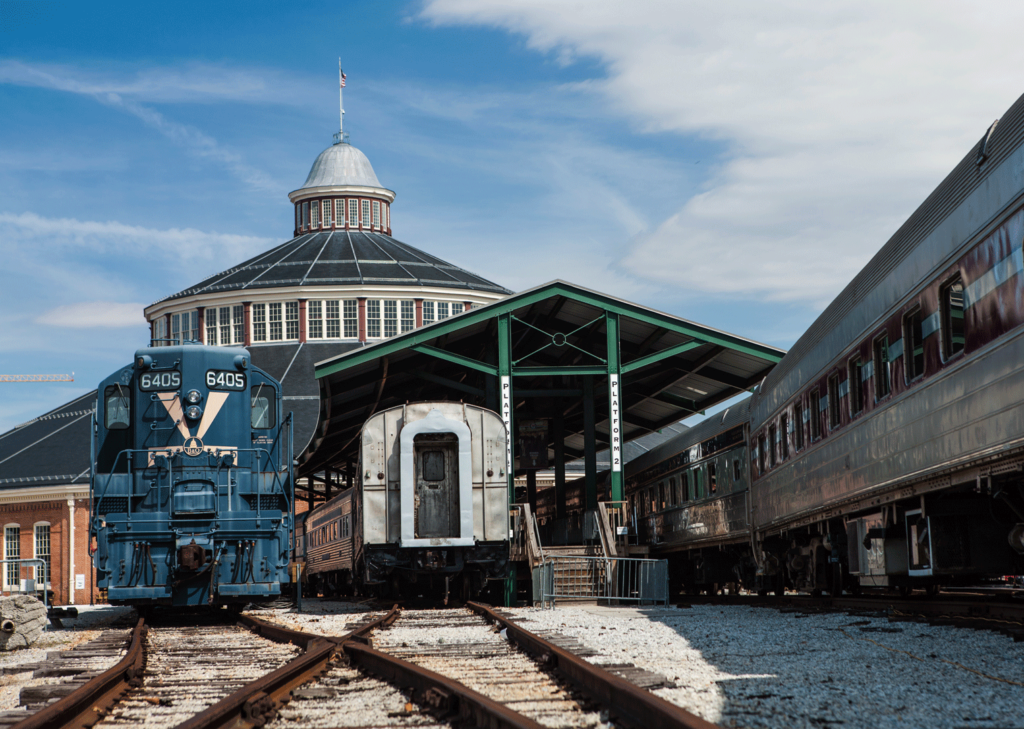
The B&O Railroad Museum offers train rides along the first mile of track ever laid in America.
Baltimore Civil War Museum at President Street Station
Located in a former train terminal that opened in 1850, the Baltimore Civil War Museum explores the station’s role in the Civil War—a story that includes a secret escape by President-elect Abraham Lincoln to thwart an assassination attempt—and involvement in the Baltimore riot of 1861, when Massachusetts state militia troops were attacked by angry Confederate sympathizers.
Baltimore Museum of Industry
This one-of-a-kind museum, located in a former waterfront oyster cannery, celebrates the industrial history of the city and the innovative spirit of the industry worker, past and present, through immersive exhibitions, educational programs, hands-on activities, tours and demonstrations. Visit the Baltimore Museum of Industry in Locust Point to get a hands-on look at working life in Baltimore through the years.
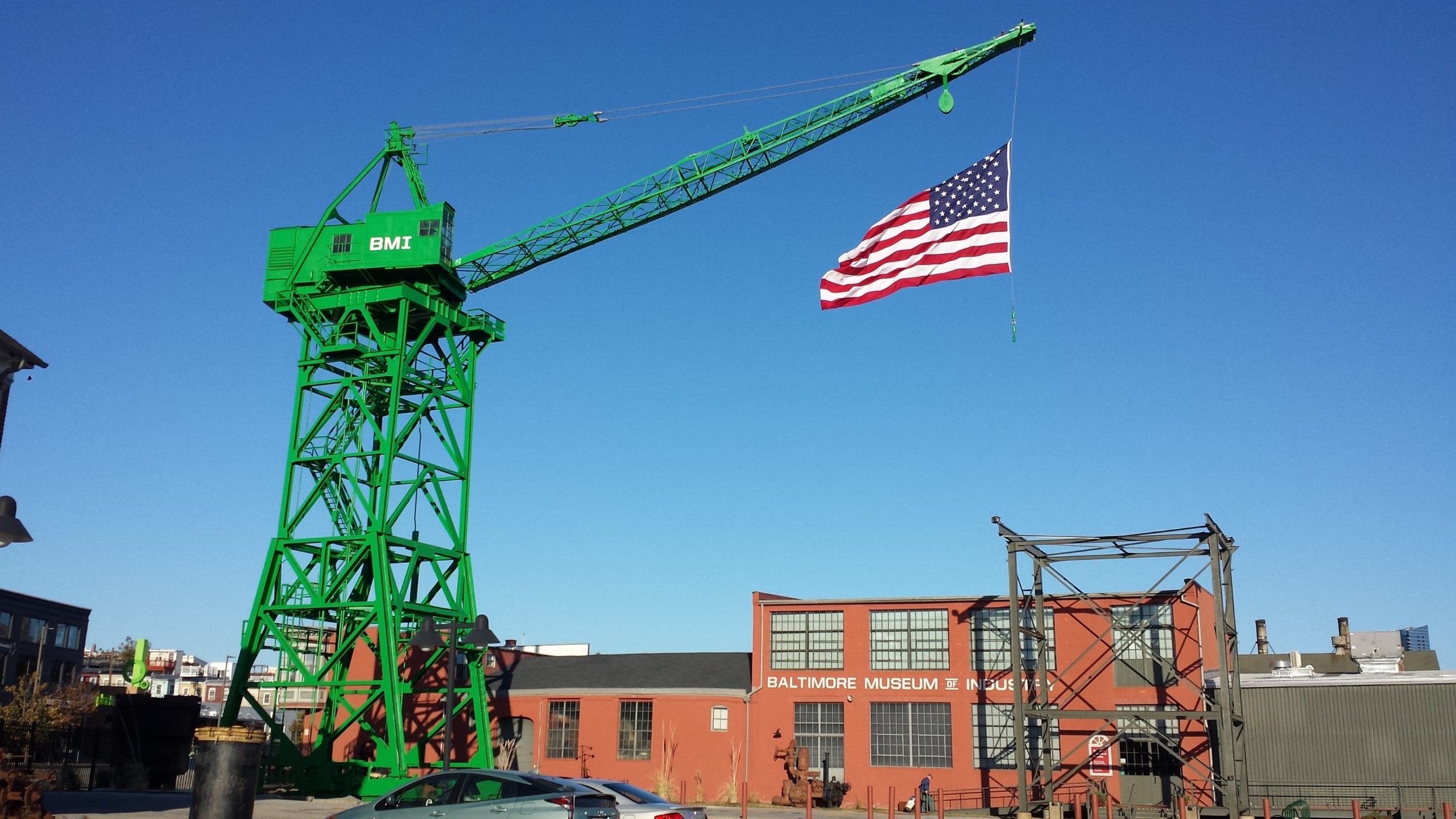
Built in 1942, the colossal whirley crane outside the BMI stands at 104 feet tall.
Baltimore Streetcar Museum
The Baltimore Streetcar Museum boasts one of the most comprehensive collections of a city’s transit history. Stop by to take a tour and to see the collection of authentic Baltimore streetcars dating to 1888. As home to the first commercially operated electric streetcar line, you can also catch a ride on one the most historic streetcars in the country.

Baltimore Streetcar Museum admission includes unlimited rides on the historic collection of streetcars.
Creatively Black Baltimore
Located in the former Ripley’s Believe It or Not Space on the second floor of the Inner Harbor‘s Light Street Pavilion, this groundbreaking free art exhibition houses more than 400 works of art by 80 Black Baltimore-based creatives. The breadth of sculptures, multimedia pieces, graffiti, portraits, photography and textiles underscores the vibrancy and diversity of Black expression, and their placements in each room speak to the artists’ willingness to collaborate with and inspire one another. And if you love what you see, you can take it home with you! All the art featured in Creatively Black Baltimore is for sale via QR codes pasted below each piece.
The Gallery in Baltimore City Hall
You don’t need to be a resident to have a reason to visit Baltimore’s majestic City Hall. Come through to see shows by local artists on curated Baltimore themes, like Derrick Adams’ “Where I’m From” and the recent show on “Barbers and Porters: Pillars of Community.” Plus, it’s free.
George Peabody Library
At this expansive library in Mount Vernon—considered to be one of the most beautiful libraries in the world, you’ll find a 300,000-volume collection that includes 18th and 19th-century texts, rare books, manuscripts and more. The Peabody also puts together special rotating exhibits like the recent “Women of the Book” exhibit, which gives voice to the life and spirituality of women involved in monasticism during the Renaissance/Enlightenment. The best part? The library and its special collections are completely free to visit!

The Peabody Library, which opened its doors in 1878, stands six stories tall and houses more than 300,000 books.
Irish Railroad Workers Museum
Just around the corner from B&O Railroad Museum, this niche museum sits inside two 1848 alley homes that once housed Irish railroad workers. One of the homes in the Irish Railroad Workers Museum is furnished to reflect the lives of the family who lived there in the 1860s; the other offers changing exhibits on the history and local experience of the Irish-American community in Southwest Baltimore.
Jewish Museum of Maryland
The Jewish Museum of Maryland celebrates the Jewish-American experience in Maryland via two galleries of ceremonial art, rare artifacts, oral histories, videos, photos and hands-on activities. A rotation of exhibits feature stories on everything from fashion to pioneering Jewish astronauts. Founded in 1960 to restore the historic Lloyd Street Synagogue, the campus now includes the museum alongside a research library, museum shop, meeting rooms and more.
The Jewish Museum is currently closed to the public.
Maryland Center for History and Culture
The Maryland Center for History and Culture is more than just a museum. It’s also a library and an educational resource where visitors can learn all about our nation’s history from Maryland’s point of view. Located in the heart of Mount Vernon, this cultural center houses thousands of artifacts and artwork, from scientific instruments to quilts to pieces of jewelry, that tell Maryland’s story.
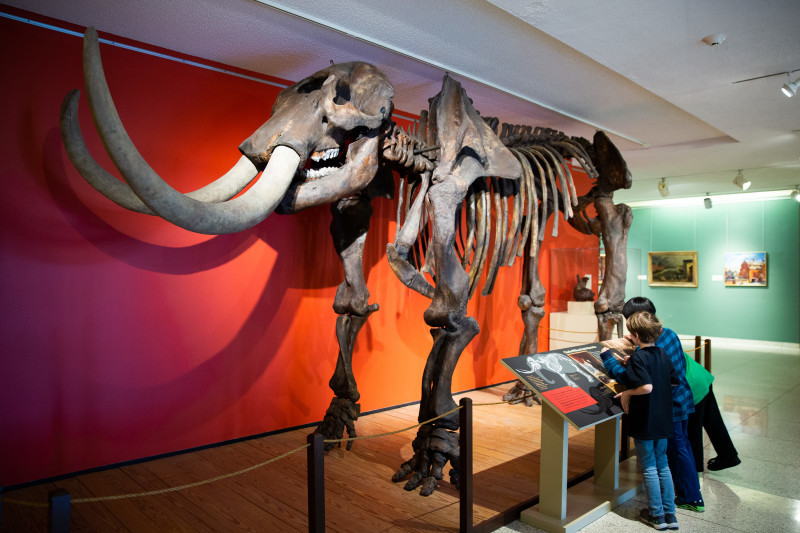
The massive mastodon skeleton replica at the Maryland Center for History and Culture stands 10 feet tall by 18 feet long.
Johns Hopkins Archeological Museum
Run by the namesake academic institution, the free Johns Hopkins Archeological Museum displays objects of antiquity such as Greek ceramics, Islamic glass, Hellenistic lamps and an ancient mummy from Egypt, as well as nearly 700 archaeological items from from Rome to the Americas.
Maryland Art Place
Located in the Bromo Tower Arts and Entertainment district, this free contemporary art gallery is devoted to showcasing the work of emerging and established mid-career artists. You can find changing curated exhibits by recent MFA graduates, as well as lectures and workshops. Maryland Art Place also works with local businesses to increase artist exposure by exhibiting in places like the Hotel Indigo and La Quinta Inn & Suites Downtown.
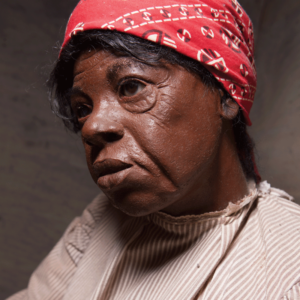
Harriet Tubman is one of the many famous African Americans depicted at the National Great Blacks In Wax Museum.
The National Great Blacks In Wax Museum
The Great Blacks In Wax Museum chronicles African American history through more than 100 wax figures and scenes. It was started in 1980 by a local couple, who spent their savings on the first 21 figures. Today, the museum has grown into a 30,000-square foot museum, complete with a powerful slave ship exhibit and a dedicated Maryland room spotlighting the contributions of local African Americans.
National Museum of Dentistry
Have a passion for oral history? The National Museum of Dentistry, part of the University of Maryland School of Dentistry, America’s first dental school, examines the history of the profession through 40,000 objects. The collection includes George Washington’s dentures (they weren’t wooden, it turns out), vintage toothbrushes and exhibits on dental forensics, cutting-edge biotechnology and even the different types of animal teeth.
The Peale
Colloquially known as Baltimore’s Community Museum, the Peale aims to uplift the storytellers and change makers that weave the city’s cultural fabric. To advance this mission, the Peale is building the largest digital archive of Baltimore stories in the world, inviting community members to record narratives on everything from neighborhood life to social justice reform to the local arts and food scenes. You can listen to these stories on the Peale’s website, and even record your own Baltimore story! The museum also frequently hosts author talks, performances and immersive experiences to foster creative experimentation and collaboration.
Sankofa Children’s Museum
Sankofa aims to introduce school-aged children to the traditions of Africa’s 54 nations, where many of their ancestors once lived. Ancient artifacts on display include bronze sculptures, fang masks and hunting tunics.
